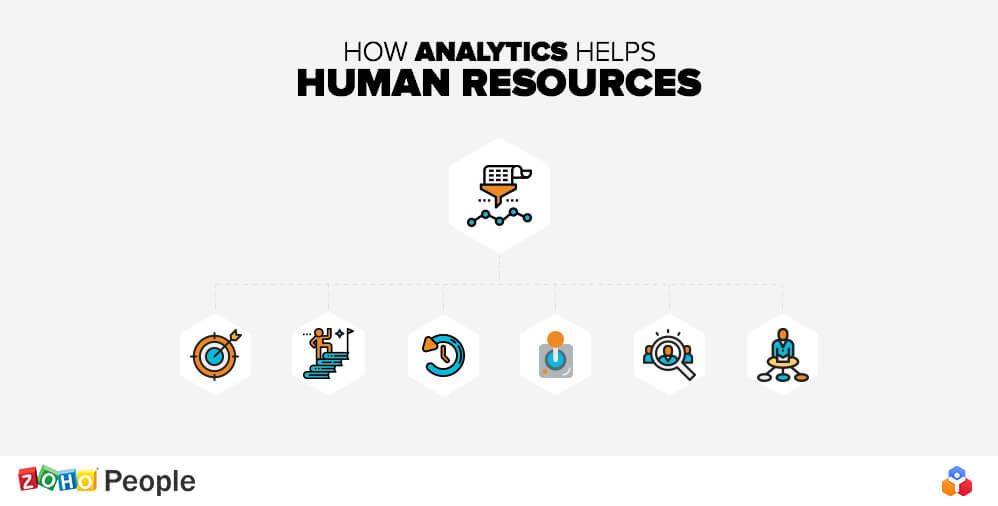“The goal is to turn data into information and
information into insight.”
– Carly Fiorina, Former CEO, HP
Did you know that a basketball player’s activities are tracked 25 times per minute, from the number of times the player has touched the ball to how far he/she has travelled during the game? Everything is quantifiable if you have the right tool. Everything around you is being tracked, including every action in an organization.
Today, as an HR professional, you‘re expected to do more than just manage the workforce. The work environment demands that you be a critic, a nerdy statistician, giving analytical input and key insights about the way your organization functions.
Data is the key to strategy. It‘s not about how large your dataset is, but about how well you use it. To utilize data, you first need to decode what’s relevant and useful. But where will you find the time and resources to analyze and leverage this information? This is when people analytics comes into play.

What is people analytics?
“People analytics” isn’t just a buzzword. It’s the future of human resources. People analytics, or HR analytics, in essence takes the company’s wealth of existing employee data from HR software, like salary history, tenure, performance, and compensation, from different systems and links it with the organization’s business goals to give meaningful, actionable insights. The Global Human Capital Trends-2017 report from Deloitte states that 32% of companies are ready for people analytics, an increase of one–third from the previous year.
6 ways analytics helps human resources
#1 Turn problems into proactive goals
Wouldn’t it be great to get an edge over issues before they even arise? Decisions are hard to make, especially when you don’t have the right information. Spending most of your time identifying what your employees need will hinder you from actually providing it. A delay in understanding the root causes of any issue will have consequences. Let’s say that your stats indicate that many employees in your organization are disengaged with their work or workplace. Now that you know the problem is sprouting, you can start solving it before it bursts out. When you can gather data and make it easily available, you can act faster, better, and smarter.
#2. Track your success rate
A company’s economy runs on its people. Workforce design is taking new shape and moving towards a team–oriented phase. In this disruptive business scenario, it is of pivotal importance to know how your employees are performing in a dynamic workspace. HR managers need insightful data to understand how people work best.
People analytics can guide you in understanding employee needs, sorting out employees who are excelling and those who need further training, as well pointing to which HR practices are successful and which need to change. Analytics can tell you which teams are performing well, how people feel about working in your organization, how much they enjoy their jobs, the results of training programs, and more. It’s a way to measure the win rate of HR practices and employee development activities.
#3 Track the history of changes
Data matures over time as business scenarios and workforces keep evolving. Understanding how these changes occur and keeping track of them can have a great impact on the decisions and policies HR managers make. Analytics lets you measure, monitor, and analyze risk factors that have occurred over specific periods of time in order to devise feasible plans and avoid shortfalls.
#4 Increase retention
With every new hire, your network broadens and moves towards creating more revenue. Losing an employee costs more when you have to hire someone new. About 86% of business leaders are concerned about employee retention. Analytics can help you understand the reasons why employees quit. With insights like these, HR managers can look into the team’s or organization’s characteristics and make the required changes.
#5 Hire the right people
Studies reveal that only six seconds are spent reviewing a resume, and 80% of time is spent considering just six data points: name, current company, current position, previous company, previous position, and education. This process often fails to capture potentially capable resources who could add value to the organization. The use of automatic decision support to refine more than these six data points is necessary to recruit resources who will stay longer and contribute more.
#6 Decipher potential
As important as hiring the right people and increasing retention is, it’s also important to identify and promote the right team members. HR analytics indicates the traits that strengthen the success of the organization. Often, a combination of the right skill sets and personalities produces great results. By eliminating the trial and error method, analytics refines the process and helps reduce skill gaps.
Now that we understand how people analytics helps human resources, remember that clear, error-free data collection is just as important as the statistics you get from it. Don’t just use data to analyze, but also to plan. Start embracing the world of data, logistics, and stats to enhance the world of HR.
Well articluated
Yes, HR analytics is a booster for Executives to know their workforce better to achieve desired output. It's an useful insight. Thank you.
Glad that the article has helped you, Reagon.
Very relevent now..
Thank you for sharing your thoughts :)